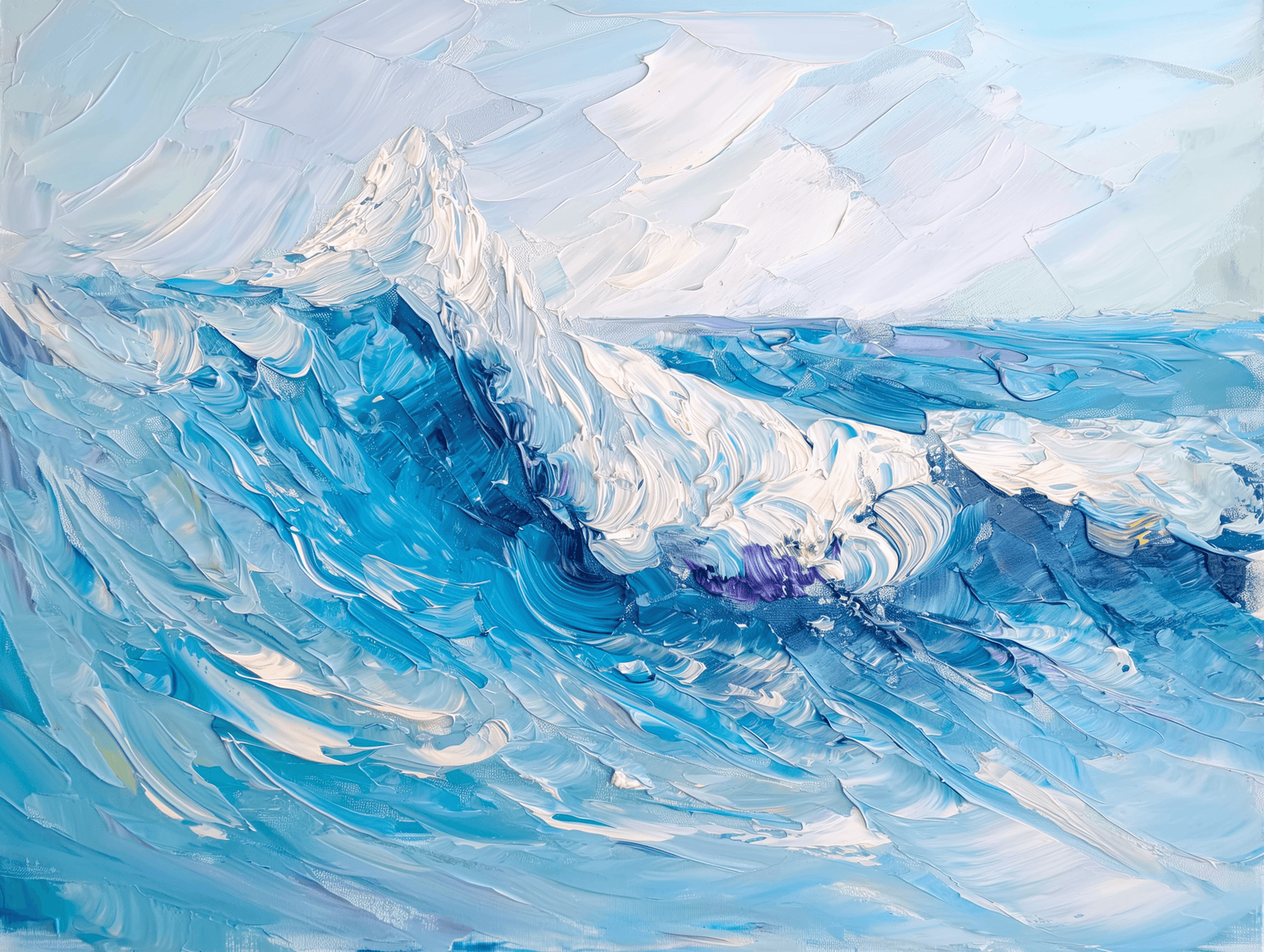
Claude Monet is undoubtedly one of the most celebrated artists in the history of art, best known for founding the Impressionist movement , which revolutionized painting in the late 19th century. His art is distinguished by his innovative use of light and color, capturing the fleeting essence of landscapes and everyday scenes.
In this article, we will explore Monet's biography, his most famous works, some curiosities about his life and style, and how Materico.it has reproduced his masterpieces, bringing the experience of light and the beauty of nature directly into the homes of art lovers.
Who was Claude Monet?
Claude Monet was born on November 14, 1840 in Paris , but spent much of his childhood in Le Havre, a port city on the Normandy coast. From a young age, Monet showed a precocious talent for drawing, but his initial artistic training was unconventional: he entered the Academy of Fine Arts in Le Havre, where he began to develop his unique style.
He began his career as a painter of landscapes and scenes of everyday life, but it was his innovative technique of painting en plein air (outdoors) that made him a leading figure in the Impressionist movement. Monet was fascinated by light and the effect it had on the environments and subjects he painted.
Monet's most famous works
1. Impression, rising sun (1872)

This is the work that gave the entire movement its name. "Impression, Sunrise" depicts the port of Le Havre at dawn and shows how Monet was able to capture the effect of light on the sea and sky in a precise moment, with rapid brush strokes and brilliant colors. The work initially caused a great scandal, but is now considered an absolute masterpiece.
2. Water Lilies (1899-1926)

One of Monet's most iconic series, depicting his garden in Giverny, where the artist lived in the last years of his life. The Water Lilies are famous for their treatment of light and reflection on the water. Monet devoted many years to this cycle of paintings, trying to capture the mutability of nature.
3. The Gare Saint-Lazare (1877)

A painting of the Paris train station, one of the most modern and rapidly evolving places during Monet's time. With this work, the artist captures the energy of progress and movement, using smoke and light to create a dynamic atmosphere.
4. Women in the Garden (1866)
A painting that explores the fusion between the human figure and nature. Monet depicts two women in the garden of a house, while the intense green of the plants and the light filtering through the trees create a harmonious and fluid composition.
Style and Innovation: The Revolution of Impressionism

Monet is considered the founder of the Impressionist movement , a group of painters who revolutionized Western art. Unlike his predecessors, Monet was not concerned with reproducing reality precisely, but sought to capture the effect of light and the change of colors at a given moment. His technique is based on the use of small brush strokes of pure color that overlap, creating an optical effect that stimulates the viewer's eye.
Monet also used a vibrant color palette, making the painted environment alive and dynamic. His landscapes are never static; they move through the changing weather and light.
Curiosities about Claude Monet
1. Passion for the garden
Monet loved spending time in his garden at Giverny , where he created a veritable oasis of flowers, plants and ponds. Many of his most famous works, including Water Lilies , were created in this garden, which became a central element of his artistic production.
2. The rejection by critics
Initially, Monet and the other Impressionist painters were heavily criticized. Their “unfinished” paintings and everyday subjects, such as railroads and gardens, were considered inferior to traditional academic painting. Despite this, Monet persevered and eventually the Impressionist movement took its place in art history.
3. Vision problems
In the last years of his life, Monet suffered from serious vision problems, which affected his work. This did not stop him, on the contrary, his paintings of the last years, such as the Water Lilies series , show a distortion of reality that has fascinated critics and art historians.
4. He refused to teach
Although he was a master in his field, Monet always refused to teach his art to others. He preferred to concentrate on his own painting and the evolution of his style, without influencing other artists.
5. His luck came late
Monet saw his success come only in the last years of his life. During his career, he struggled financially, but his genius was recognized posthumously, making him one of the most influential figures in modern art.
Conclusion
Claude Monet was a pioneer of the Impressionist movement, pushing art to new frontiers of expression and perception. His works, which capture the fleeting essence of light and nature, have become symbolic of a new vision of the world.
With the three-dimensional artistic reproductions of Materico.it , today it is possible to bring the beauty of Monet into homes, exploring impressionist art in a completely new and engaging way.








